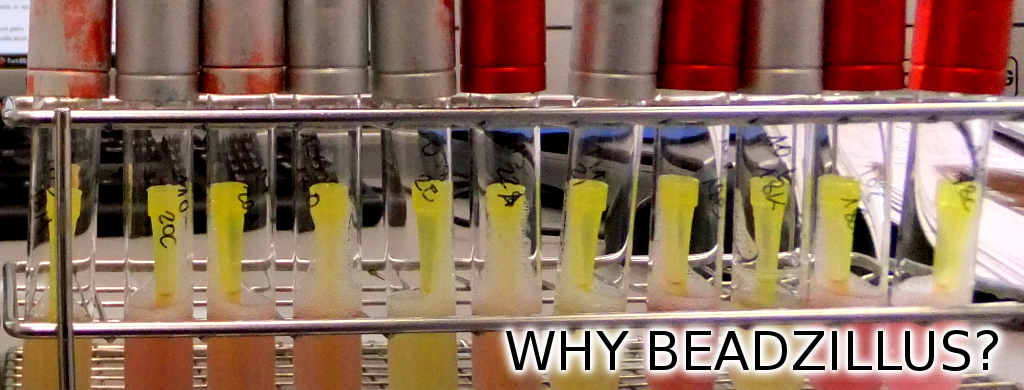Team:LMU-Munich/Why Beadzillus
From 2012.igem.org
| Line 14: | Line 14: | ||
The use of filters in every day life as well as in the lab is widespread. To enlarge the surface per volume in the filter beads are commonly applied. These microbeads have a certain size and their surface feature characterizes the filter. Proteins have features (binding or enzyme reaction) which can be used if they are bound to the beads. Several companies offer such microbeads with proteins coupled to their surface by using tags. | The use of filters in every day life as well as in the lab is widespread. To enlarge the surface per volume in the filter beads are commonly applied. These microbeads have a certain size and their surface feature characterizes the filter. Proteins have features (binding or enzyme reaction) which can be used if they are bound to the beads. Several companies offer such microbeads with proteins coupled to their surface by using tags. | ||
| + | <br> | ||
<br> | <br> | ||
These beads are usually out of poly styrene, are quiet expensive because in an additional working step the proteins have to be coupled to the surface. Also the proteins could become loose as they are not stably bound to the beads. In addition there is the problem of disposal of these anorganic beads. | These beads are usually out of poly styrene, are quiet expensive because in an additional working step the proteins have to be coupled to the surface. Also the proteins could become loose as they are not stably bound to the beads. In addition there is the problem of disposal of these anorganic beads. | ||
| + | <br> | ||
<br> | <br> | ||
So we thought of naturally produced biological beads which should have about the same size and be very stable. Then they should also be very cheap, the beads should directly express the protein on their surface with a stable peptide binding. Also the problem of disposal would disappear as you can burn the whole organic material. | So we thought of naturally produced biological beads which should have about the same size and be very stable. Then they should also be very cheap, the beads should directly express the protein on their surface with a stable peptide binding. Also the problem of disposal would disappear as you can burn the whole organic material. | ||
Revision as of 13:10, 24 October 2012

The LMU-Munich team is exuberantly happy about the great success at the World Championship Jamboree in Boston. Our project Beadzillus finished 4th and won the prize for the "Best Wiki" (with Slovenia) and "Best New Application Project".
[ more news ]


Why Beadzillus?
The use of filters in every day life as well as in the lab is widespread. To enlarge the surface per volume in the filter beads are commonly applied. These microbeads have a certain size and their surface feature characterizes the filter. Proteins have features (binding or enzyme reaction) which can be used if they are bound to the beads. Several companies offer such microbeads with proteins coupled to their surface by using tags.
These beads are usually out of poly styrene, are quiet expensive because in an additional working step the proteins have to be coupled to the surface. Also the proteins could become loose as they are not stably bound to the beads. In addition there is the problem of disposal of these anorganic beads.
So we thought of naturally produced biological beads which should have about the same size and be very stable. Then they should also be very cheap, the beads should directly express the protein on their surface with a stable peptide binding. Also the problem of disposal would disappear as you can burn the whole organic material.
We found these biological beads with all the requirements in the spores of the soil bacteria Bacillus subtilis. Under nutrient limitation B. subtilis produces endospores which can resist environmental harsh conditions.
 "
"








